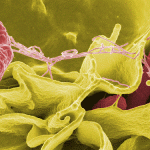
A pacemaker consists of a small battery that takes over the function of the sinoatrial node, sending impulses to the heart and making it beat. Image: Shutterstock.
The pacemaker does not take over from the heart; it merely helps to regulate the sequence and timing of your heartbeat.
The pacemaker is used for patients whose sinoatrial node or accompanying electrical nerve links function badly, causing a very slow or irregular cardiac rhythm. It sends impulses through two cables that replace the patient’s nerve links in the heart, making it contract.
The pacemaker is adjusted to the patient’s cardiac rhythm, and it emits a short, low-voltage pulse when the patient’s pulse gets too low. It can be compared to a power switch that turns on the light and makes it flash one single time.

Image: Shutterstock
But even among people with a pacemaker, death due to cardiac problems is very common. If we extend the light- power switch analogy, there may be a lot of reasons the light doesn’t turn on, although the switch has been flipped: the light bulb may be non-functional or the cable may have been cut.
In the same way, the heart can easily stop beating in spite of the pacemaker still emitting electrical impulses. And if the heart tires over the years and no longer has the power to contract, or if a coronary thrombosis occurs, the pacemaker is of no help.
Got a burning science question?
Send us your questions to letters@scienceillustrated.com.au. If we publish the answer on our website or in the next issue of Science Illustrated you could win amazing prices!






